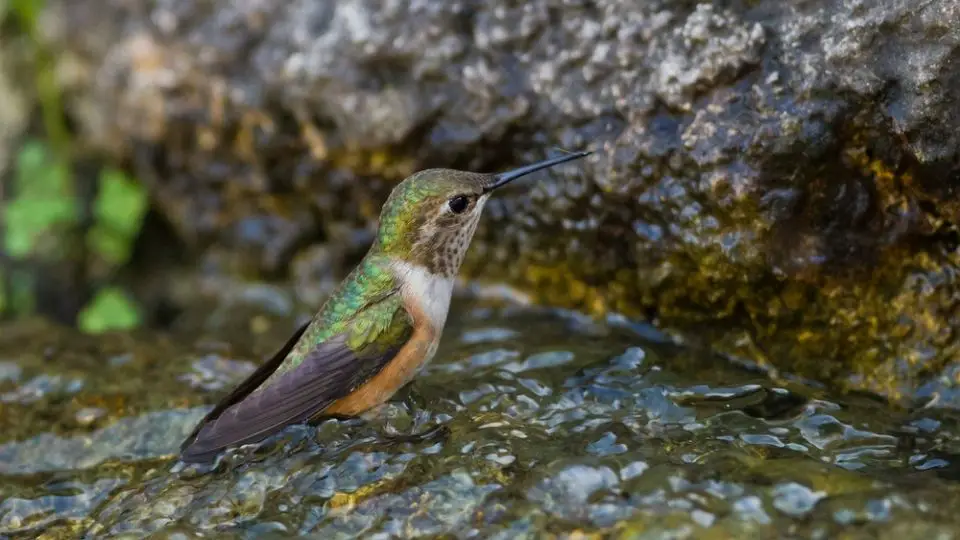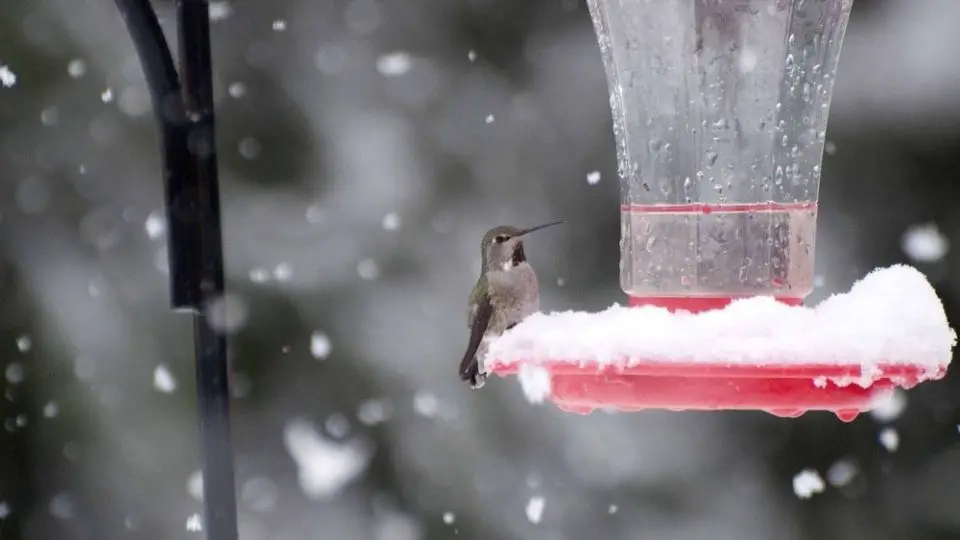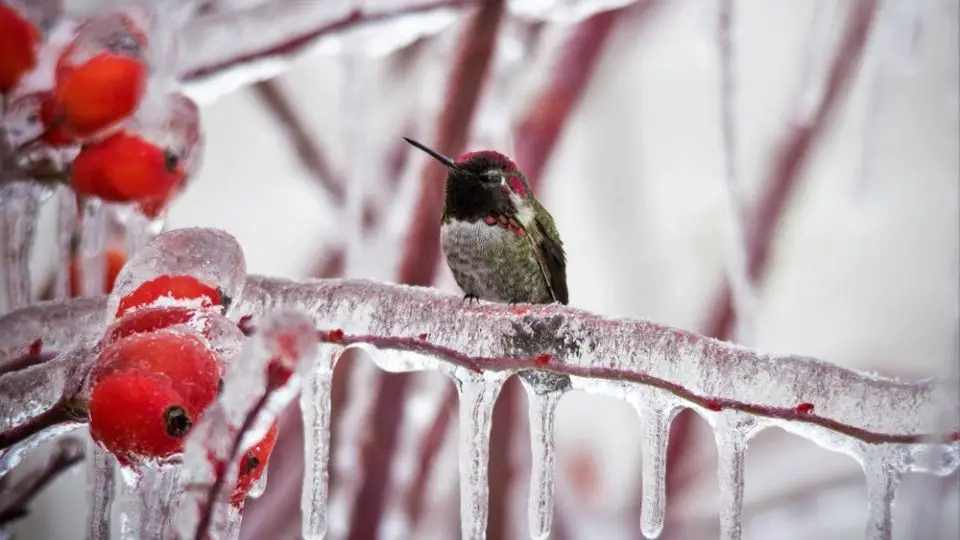Hummingbirds arrive in Minnesota in April; by early July, they are mostly gone. These tiny little birds migrate thousands of miles between spring and fall. They do so from Mexico, Georgia, Alaska, Florida, Alabama, and Arizona, to Central America, spreading throughout the US as the weather warms.
Table of Contents
When Do Hummingbirds Arrive in Minnesota?
For many Minnesotans, the sights and sounds of birds in the air mark the end of winter. Minnesota Conservation Volunteers report that they also typically sight the last of the Minnesota spring-migrating hummingbirds by June. The birds also arrive in the region during late April while on their journey to the North and mostly prefer nesting close to where they were born. Some of these migrating hummingbirds include the Ruby-throated birds, Calliope hummingbirds, and Rufous hummingbirds.
Hummingbird Migration Pattern in Minnesota
In April, the first migrating hummingbirds can be seen arriving in Minnesota. Most of these birds are often males. If you have feeders in your backyard, you should keep an eye on the brightly colored male birds. After one week, the birds are typically followed by females from their territory.
The males also arrive first so they can stake out any new territory and defend it as they try to draw in their female counterparts. The hummingbirds that start their spring migration from Panama fly about 4,116 miles so that they can reach Minnesota on time. Those that begin their journey from Mexico fly up to 1,679 miles to reach Minnesota.
However, the only native hummingbirds that live and nest in Minnesota are the Ruby-throated hummingbirds. The rest of the hummingbirds seen in Minnesota are usually passing through on their way to a nesting destination. The Ruby-throated hummingbird birds in Minnesota have a breeding range that runs throughout the entire eastern half of the United States up to the southern parts of Texas and Canada.
All the other birds move towards the North to find a mate, build a nest, and raise new offspring. Also, once the birds reach the North, they focus on securing territory and finding a partner to mate with. In Minnesota, the native nesting hummingbirds have two broods each year, but other birds can have up to three.
In addition, from the first week of May, they will continue to migrate for several months. As a result, by June and July, the birds tend to spread throughout Minnesota to search for the nectar of flowering plants and the hummingbird feeders found in Minnesota’s residents’ backyards. The ruby-throats migrants are also known for thriving in the warm Minnesota summer temperatures.

Where are some good places to go bird-watching in Minnesota?
When you set out a feeder in Minnesota during this time in preparation for the birds’ arrival, there is a high chance that you will see more of them. However, there are some places to visit in Minnesota to catch a better sight of these birds. One such example is Hawk Ridge, a bird observatory and nature reserve in Duluth, Minnesota. It’s considered one of the absolute best places to go for bird watching.
Hawk Ridge is also at the top of a high hilly place, making it easy for enthusiasts to go and observe birds. There is also a viewing platform where people can go to see the birds and take wonderful photographs. In this beautiful bird-watching oasis, one can easily see some of the most breathtaking tiny hummingbirds.
When Should I Put Out Hummingbird Feeders in Minnesota?
If you’d like to see the beautiful ruby-throated hummingbirds in your backyard, you should consider getting a
Hummingbird enthusiasts in Minnesota must also put their hummingbird feeders outside by mid-April to attract the earliest arriving migrating hummingbirds. However, some people leave their hummingbird feeders up all winter to provide the birds with essential, nourishing nectar.
During winter and hot summers, the only hummingbirds that can be sighted in Minnesota by bird enthusiasts are the year-round hummingbird residents. Leaving the feeders outside also means that the Minnesota year-round birds, the Ruby-throated hummingbird, and the old or injured can get the much-needed nutrition. Fill up your hummingbird feeder easily with one part sugar, and just three parts water, and then delight as these agile wonders flutter all around it.
The Ruby-throated hummingbird
Ruby-throated hummingbirds are one of the most common summer visitors in Minnesota. In the eastern half of the United States, the southeastern and south-central Canada, these birds live in deciduous forests, yards, parks, and gardens. They also love colorful flowerbeds and flowering hedges.
Another thing is that adult Ruby-throated Hummingbirds can also be attracted to one’s backyard if you happen to hummingbird feeders or some red tubular flowers growing on your property. Putting some sugar water for hummingbird nectar mixtures in your feeders can also help to ensure the birds keep coming back.
The male ruby-throated hummingbirds are typically easy to spot, thanks to their bright red throats for which they are named. The females have a light brown or whitish throat, which makes them another beautiful addition to people’s yards during the spring and summer!
Hummingbirds have excellent capacity for memory and can remember the exact path they have passed through in their migratory movement. They can also remember each flower or feeder they visited during their migration. They often go back to the same feeders, same path, and the same flower that they have been to year after year.

When do Hummingbirds leave Minnesota?
Minnesota migrating hummingbirds begin leaving the state as early as August, migrating south to their over-wintering areas in the gulf of Mexico and Central America. They are all be gone from Minnesota by September during late summer.
One can expect an increased volume of hummingbirds at their feeders in Minnesota during the fall migration starting in August. In addition, migrating Minnesota hummingbirds are gone from the state by the end of September.
Where Do Minnesota Hummingbirds Go in The Winter?
Minnesota migrating hummingbirds travel towards the south once they leave Minnesota. The birds move towards New Mexico, Belize, El Salvador, Guatemala, Costa Rica, Honduras, El Salvador, Nicaragua, and Panama.

